The Super Connector’s Guide to Making Powerful Business Introductions
As an entrepreneur, you understand the importance of having a strong network. What many people don’t understand is that it’s not always who you know, but what you do with those connections, that matters.
Throughout my career, my extensive network in Silicon Valley has allowed me to create intros for startups seeking funding for their ventures and secure celebrities like Jerry Seinfeld for corporate events. But I haven’t done this by connecting with a bunch of random people on LinkedIn; I’ve nurtured these relationships through the power of reciprocal networking.
If you aren’t actively looking for ways to make valuable introductions for your connections, your network isn’t as strong as it could be.
Here are a few ways to make winning introductions that will lead to lucrative long-term opportunities for you and your connections.
How to Make a Powerful Business Introduction
 When you start making business introductions in person, it can feel a bit awkward. But the key to a successful connection is a clear understanding of what each individual has to gain from the relationship. If your connections don’t see an advantage to meeting the people you suggest, they’ll be skeptical of your intent.
When you start making business introductions in person, it can feel a bit awkward. But the key to a successful connection is a clear understanding of what each individual has to gain from the relationship. If your connections don’t see an advantage to meeting the people you suggest, they’ll be skeptical of your intent.
A proper business introduction immediately erases confusion among mixed groups of people. It sets the stage for respectful interactions and eases the otherwise uncomfortable first conversation.
Always introduce the person with more authority first. Adding explanatory statements after saying each person’s name will also get the conversation flowing naturally and provide context. These can be simple statements such as their job titles.
When introducing one person to a group, announce that person’s name and identifier, and introduce each group member in the order they’re sitting or standing.
Connecting people who offer complementary services is a great way to promote mutually beneficial relationships. You can also offer to let people you respect sift through your LinkedIn connections and facilitate these meetings to add value.
Tips for Navigating the Uncomfortable Email Introduction
Making introductions in person usually feels less forced than sending emails out of the blue, but it’s not always feasible to get the two people you want to connect in the same place at the same time. This is where email introductions come in.
When emailing your connections to establish an introduction, make sure you always:
- Ask for permission first. Explain the value proposition for each party meeting the other, and ask if they’d feel comfortable with you making the connection.
- Mention whether they’ve met before. People often forget brief meetings, and the reminder can save them some embarrassment.
- Make haste slowly. Good introductions require careful preparation. Think through how both parties could benefit from each other, and spell it out in an email. Hurried, ill-planned emails can have a negative impact on these burgeoning relationships–and your reputation.
- Encourage the conversation. You never want to start an email thread, only to receive no response from either party. To avoid this social disaster, urge both people in the email to arrange a time to talk in the near future.
- Make action steps clear. Be straightforward in your email, and outline what the specific next steps should be.
Solid introductions always come down to adding value for other people. When you set up a long-term cycle of promoting mutual wins, you position yourself as a credible and trustworthy business connection.
Establishing a reputation for facilitating great relationships is the best way to increase your chances of success, no matter what field you’re in. And as this cycle of reciprocity continues throughout your career, the referrals, invitations, and unique experiences will start pouring in.
This article was previously published in Inc.
Kelli Richards, CEO of the All Access Group, LLC
PS: Subscribe to my FREE All Access Group Newsletter https://bit.ly/AAGNewletter
PSS: Listen to an entire library of intimate discussions with industry visionaries https://bit.ly/AllAccessPodcastSeries (Priceless)






 The cloud allows you to store data remotely, rather than on your home computer, giving you easy access to your files from anywhere. This can keep you productive when you’re either in or out of the office, and also allows you to collaborate with others on documents, spreadsheets and presentations. The cloud really benefits small businesses because it allows for such great flexibility. You can access your data from anywhere, on any of your devices. Because you can update and share these documents on the go, cloud-based apps enable you to brainstorm with business colleagues as well as personal connections no matter where they are.
The cloud allows you to store data remotely, rather than on your home computer, giving you easy access to your files from anywhere. This can keep you productive when you’re either in or out of the office, and also allows you to collaborate with others on documents, spreadsheets and presentations. The cloud really benefits small businesses because it allows for such great flexibility. You can access your data from anywhere, on any of your devices. Because you can update and share these documents on the go, cloud-based apps enable you to brainstorm with business colleagues as well as personal connections no matter where they are.


